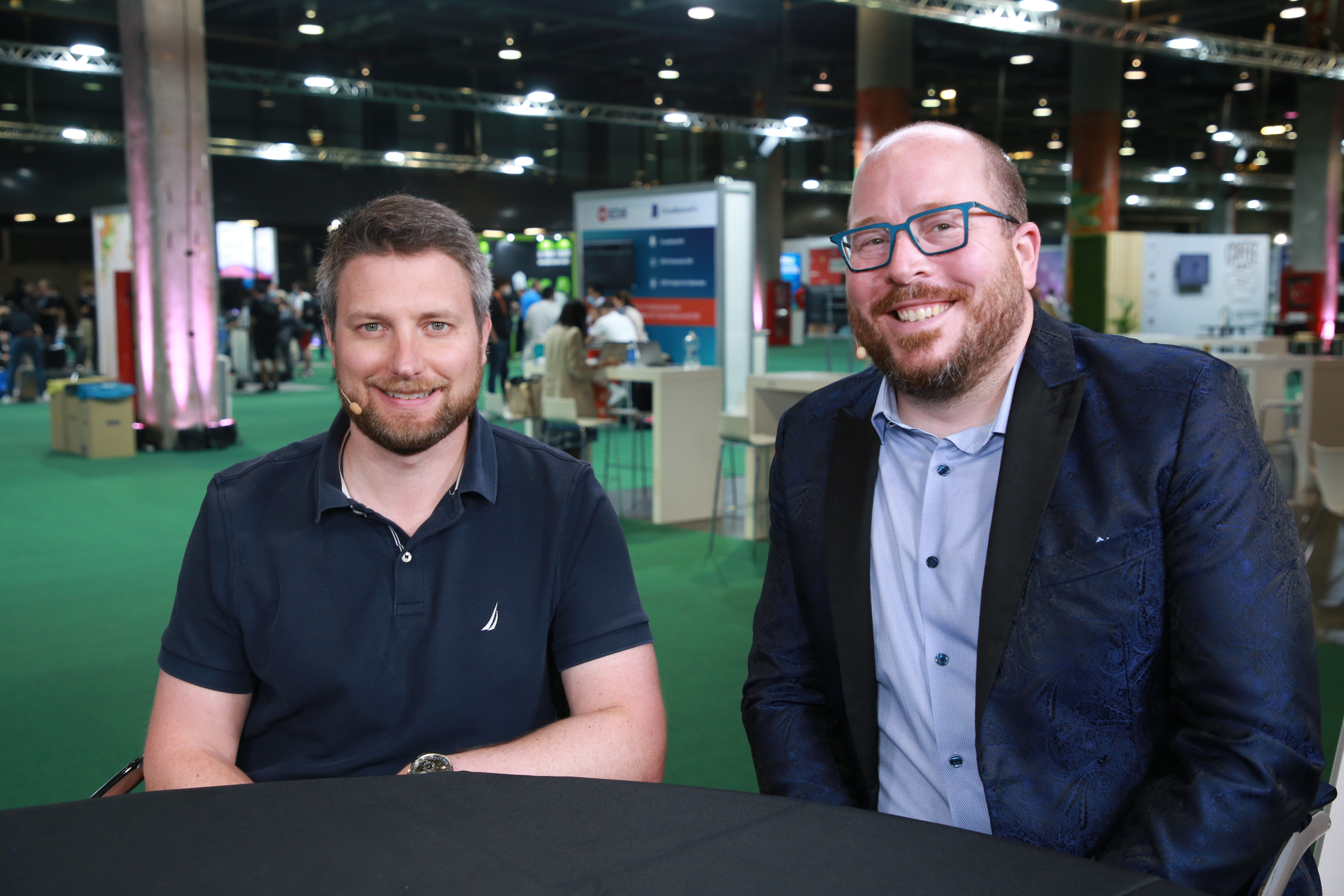 APPS
APPS
 APPS
APPS
 APPS
APPS
The most recent evolution of computing can be charted through periods of a dominant abstraction technology. Think virtual machines and the transition to cloud; then containerization, the rise of Kubernetes, and virtualized cloud APIs.
Now, according to one CNCF evangelist, we are entering the era of WebAssembly — abbreviated as Wasm (waz-um).
“I firmly believe that WebAssembly represents the next epic of tech,” said Liam Randall (pictured, right), chair of the CNCF Cloud Native WebAssembly Day and chief executive officer of Cosmonic Corp. “So, I think that day two WebAssembly continues to become one of the dominant themes, not only across cloud-native but across the entire technical computing landscape.”
Randall and Colin Murphy (pictured, left), senior software engineer, CC Web at Adobe Inc., spoke with theCUBE industry analyst Keith Townsend at KubeCon + CloudNativeCon Europe, during an exclusive broadcast on theCUBE, SiliconANGLE Media’s livestreaming studio. They discussed why they believe WebAssembly is so revolutionary and give some notable use-case examples for the technology. (* Disclosure below.)
Four languages make up the modern web. The first three are household names to anyone who has ever taken elementary coding — HTML, JavaScript and CSS. And gaining rapid adoption is the Wasm new standard language.
Technology moves fast, and the next wave of solutions needs to provide both portability and a security model that spans the entire landscape. Wasm, which is a binary instruction format for a stack-based virtual machine, meets these needs by creating a layer of equality from edge to edge across different CPUs and different operating systems, according to Randall.
“WebAssembly is so small and portable … it can go to places like iOS. It can go to places like web browsers. It can even go to teeny-tiny CPUs that don’t even traditionally have a full-on operating system inside them,” he said.
Like JavaScript, Wasm was originally designed to bring new experiences to browsers everywhere. But as organizations realized its portability and security advantages, the “tiny little virtual machine that runs everywhere” has “made a wonderful addition to backend servers and as a platform for portability to bring solutions all the way out to the edge,” Randall said.
One of those companies using the technology is Adobe Systems.
“We would not have been able to bring Photoshop to the web without Wasm,” according to Murphy. “If you have a lot of C++ or C code and you want to bring that experience to the web browser, which is a great cost-saving because it’s running on the client’s machines, really low latency, high-performance experiences in the browser, Wasm’s really the only way to go.”
Other major companies that are Wasm fans are the ecommerce platform Shopify Inc. and car manufacturer BMW AG. Shopify uses Wasm to allow customers to build unique customizations into its ecommerce site, providing the grail trio of security, speed and cost-efficiency, according to Randall. While BMW has implemented wasmCloud, a framework that lets them “flexibly scale machine learning models from their own edge, in their own vehicles through to their developer’s workstations — and even take that data onto their regular cloud Kubernetes and scale analysis and analytics,” Randall stated.
“This is a quickly evolving space and [Wasm] is going to dramatically change the type of experiences that we bring, not only to web browsers but to servers and edges everywhere,” he concluded.
Here’s the complete video interview, part of SiliconANGLE’s and theCUBE’s coverage of the KubeCon + CloudNativeCon Europe event:
(* Disclosure: TheCUBE is a paid media partner for the KubeCon + CloudNativeCon Europe event. Neither the Cloud Native Computing Foundation, the sponsor for this segment, nor other sponsors have editorial control over content on theCUBE or SiliconANGLE.)
Support our mission to keep content open and free by engaging with theCUBE community. Join theCUBE’s Alumni Trust Network, where technology leaders connect, share intelligence and create opportunities.
Founded by tech visionaries John Furrier and Dave Vellante, SiliconANGLE Media has built a dynamic ecosystem of industry-leading digital media brands that reach 15+ million elite tech professionals. Our new proprietary theCUBE AI Video Cloud is breaking ground in audience interaction, leveraging theCUBEai.com neural network to help technology companies make data-driven decisions and stay at the forefront of industry conversations.